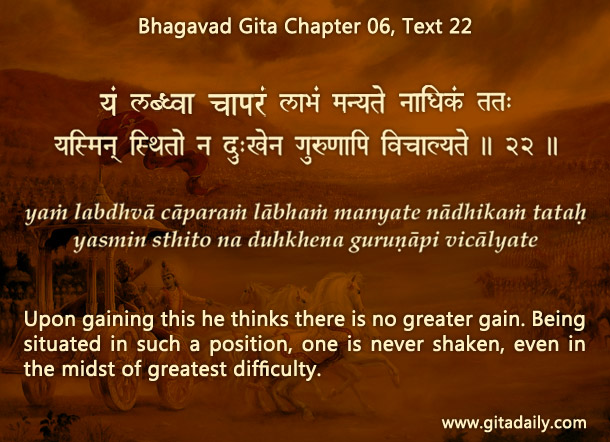Suppose we come to know of a powerful feature in our phone. That feature was always available, but to us it was just an icon somewhere on the screen. But now we are able to access it intellectually and functionally, that is, we understand what it is meant for and learn how to use it. The feature was always available and valuable, but only after it became accessible did it become valuable to us.
The same applies to our spiritual side. Of course, our spiritual side is not just a feature – it’s our essence. The soul is who we are. But as long as we don’t understand and experience the soul, it remains just an icon somewhere on our mental screen; it’s a notion that some religious people believe or some armchair intellectuals discuss.
The Bhagavad-gita makes the soul intellectually and functionally accessible. The Gita’s cogent philosophical analysis of our identity helps us make sense of life and our purpose in it. And its prescription of yoga, especially bhakti-yoga, helps us experience profound non-material fulfillment that supersedes the most glamorised worldly experiences. Advanced yogis relish such experiences far more than us because their practices are steadier and their hearts are purer. The Gita (06.22) conveys how such yogis see their spiritual side – they think that nothing is more valuable, and they don’t let anything, even great distresses, distract them from it. Because the soul is eminently accessible to them, being their lived reality, they cherish it as supremely valuable.
The soul is not that accessible to us, so we may not value it sufficiently and may become lax in our spiritual practice. But by contemplating how advanced yogis treasure their spiritual side, we can give it due priority. Thus, our spiritual side will become increasingly accessible, relishable and invaluable.


Thanks you CCD for another great example.
We all get the feeling there is more to life, but find it hard to put out fingers on it.
Jai shri Krishna